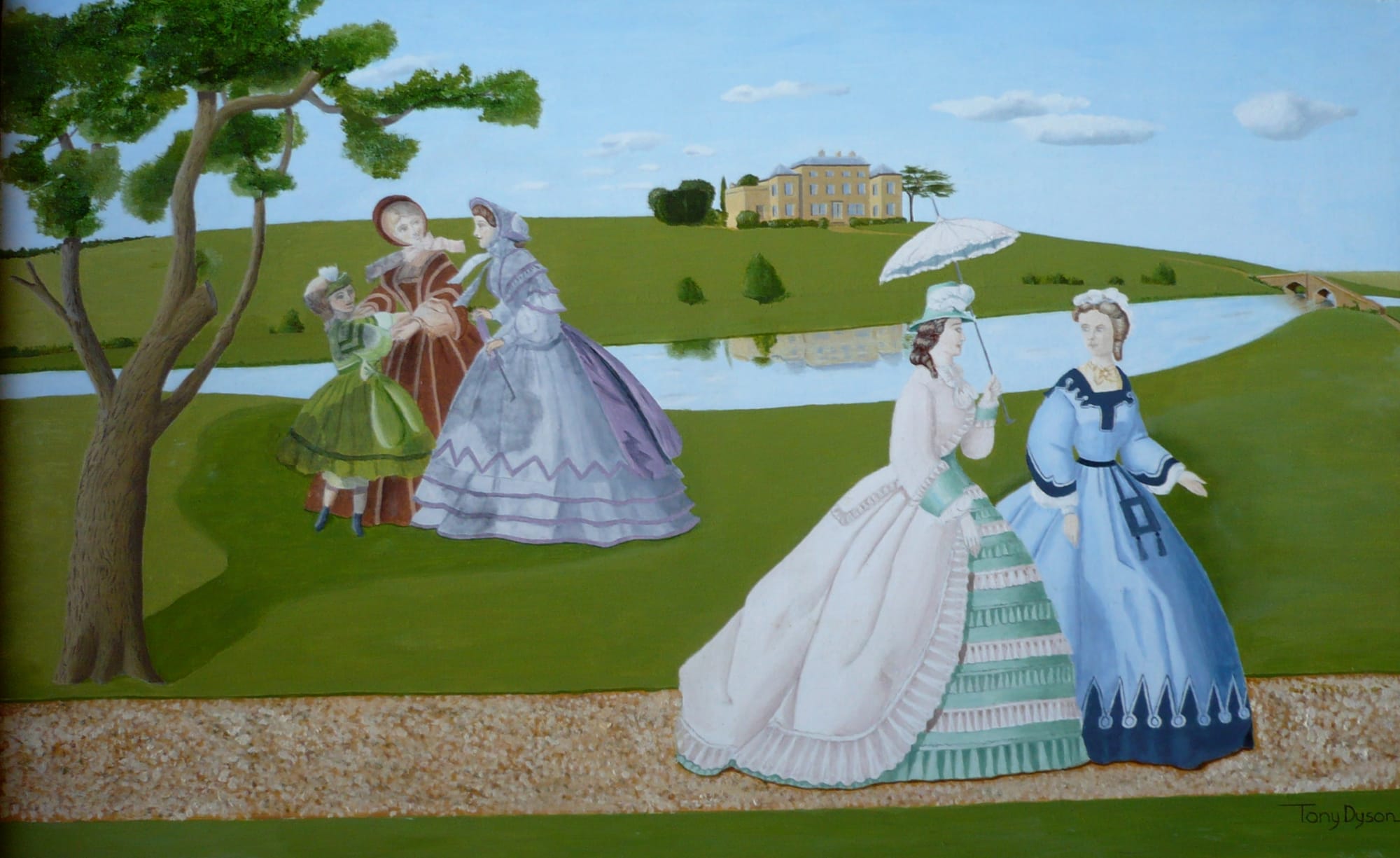Tony Dyson Gallery
Welcome to the Tony Dyson gallery
This gallery celebrates the distinctive work of local artist Tony Dyson, who spent many years in Milton Keynes and was a regular exhibitor with the Milton Keynes Society of artists. My journey with Tony’s art began with the purchase of his iconic piece, Eden. Since then, I’ve been captivated by his whimsical yet masterful portrayals of the city’s landscapes. To truly appreciate Tony’s perspective, one must know Milton Keynes—but even newcomers will find his work a compelling gateway into the spirit of this unique urban environment. The gallery features seven original paintings by Tony, each a testament to his creative legacy. Though he is no longer with us, his vibrant vision continues to inspire through these extraordinary works.
Eden by Tony Dyson
This was the first piece in my Tony Dyson collection, acquired in 1999. The longer you study it, the more layers of character and wit emerge from Tony’s brushwork. Take the hanging apple—not dangling from a tree, but from the mouth of the snake itself! If Eve reaches for this tempting fruit, she may be in for a swift and startling surprise.
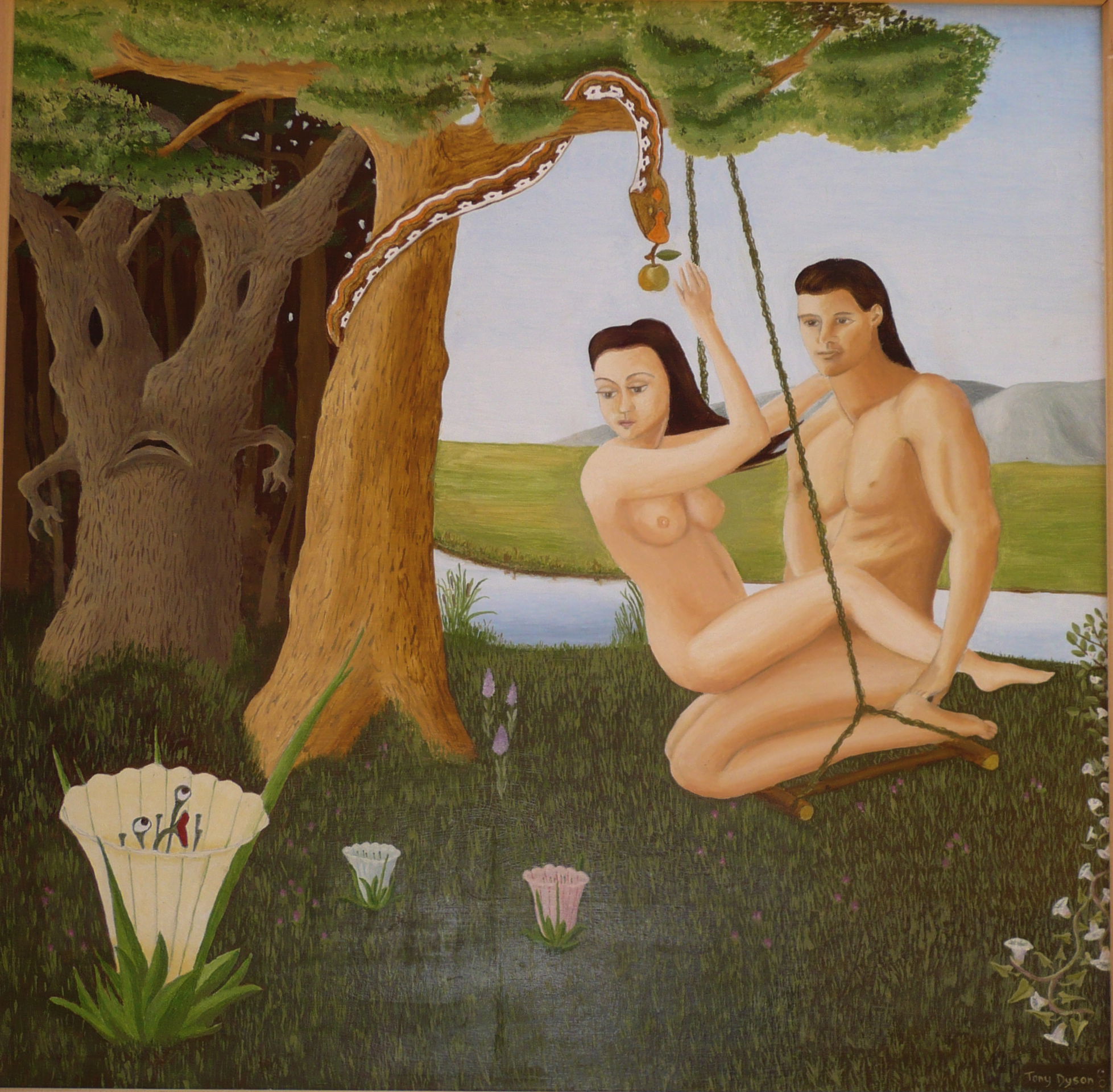
Come and see for yourself, dear by Tony Dyson
The title of this piece brilliantly reflects Tony Dyson’s playful wit. An elderly couple sit comfortably in their lounge when the husband, peering out the window, spots a Pterodactylus landing in the garden. With calm curiosity, he turns to his wife and remarks, “It’s not a bird I recognise—come and see for yourself, my dear.” True to form, Tony adds another whimsical layer to the scene. In the top right corner, you’ll notice what appears to be a Quetzalcoatlus—an enormous prehistoric creature with an eight-foot wingspan—casually circling Milton Keynes, perhaps on the lookout for a snack.
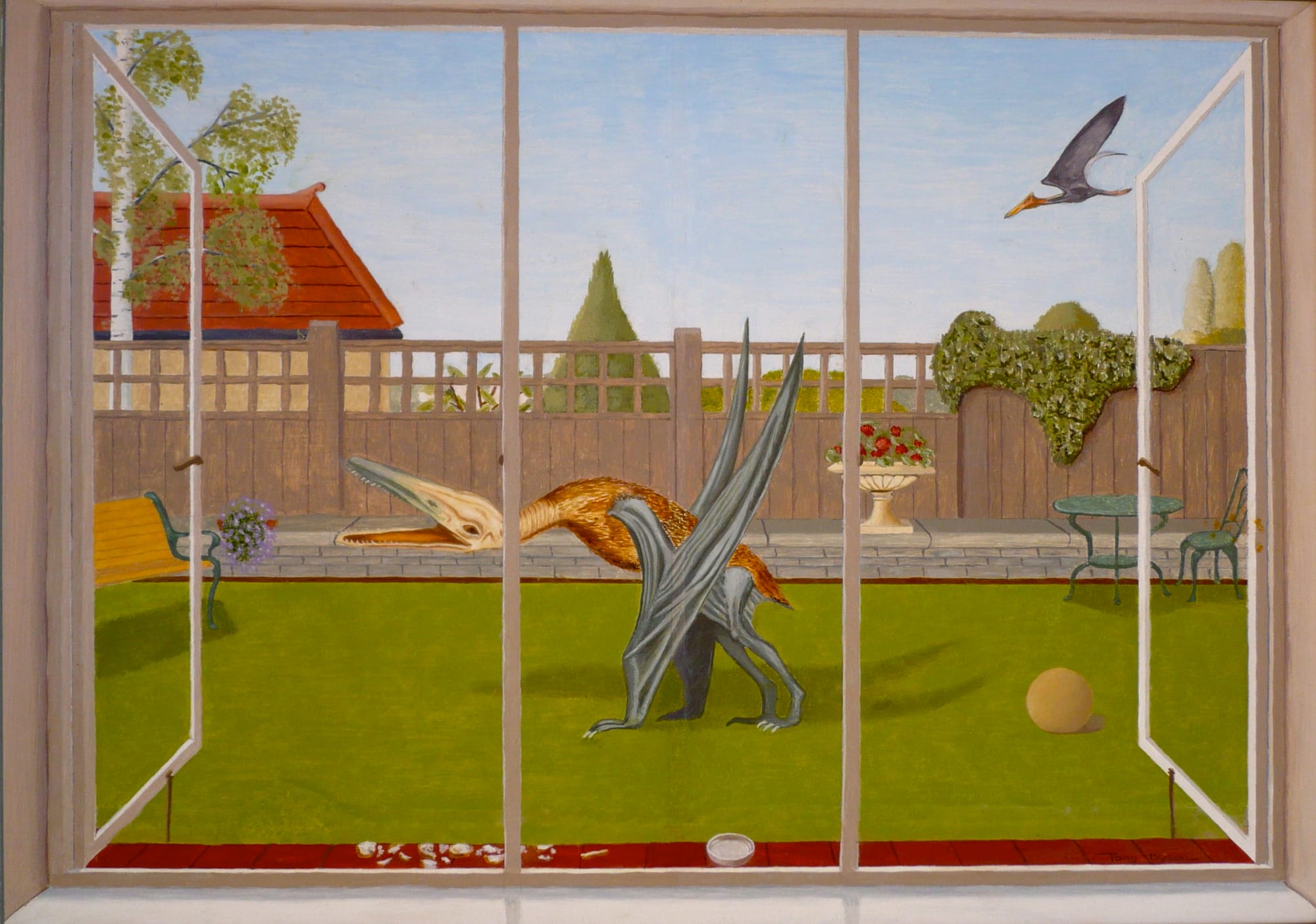
Fantasy at the Food Centre by Tony Dyson
At first glance, you might not realise this is an oil painting of the Milton Keynes Food Centre—even if you live and shop there regularly. In real life, the building may seem unremarkable, but through Tony Dyson’s eyes, it becomes a canvas for grandeur. He’s seamlessly blended the spirit of Michelangelo and Botticelli with the modern architecture of this Grade II listed site. On the far right, you’ll spot Michelangelo’s The Creation of Man—inverted to point left, for those with a keen eye. To the left, Botticelli’s iconic Birth of Venus graces the scene. What does it all mean? To me, it’s a gentle reminder that art and culture are woven into everyday life—even in the most unexpected places, like a shopping trip in Milton Keynes.
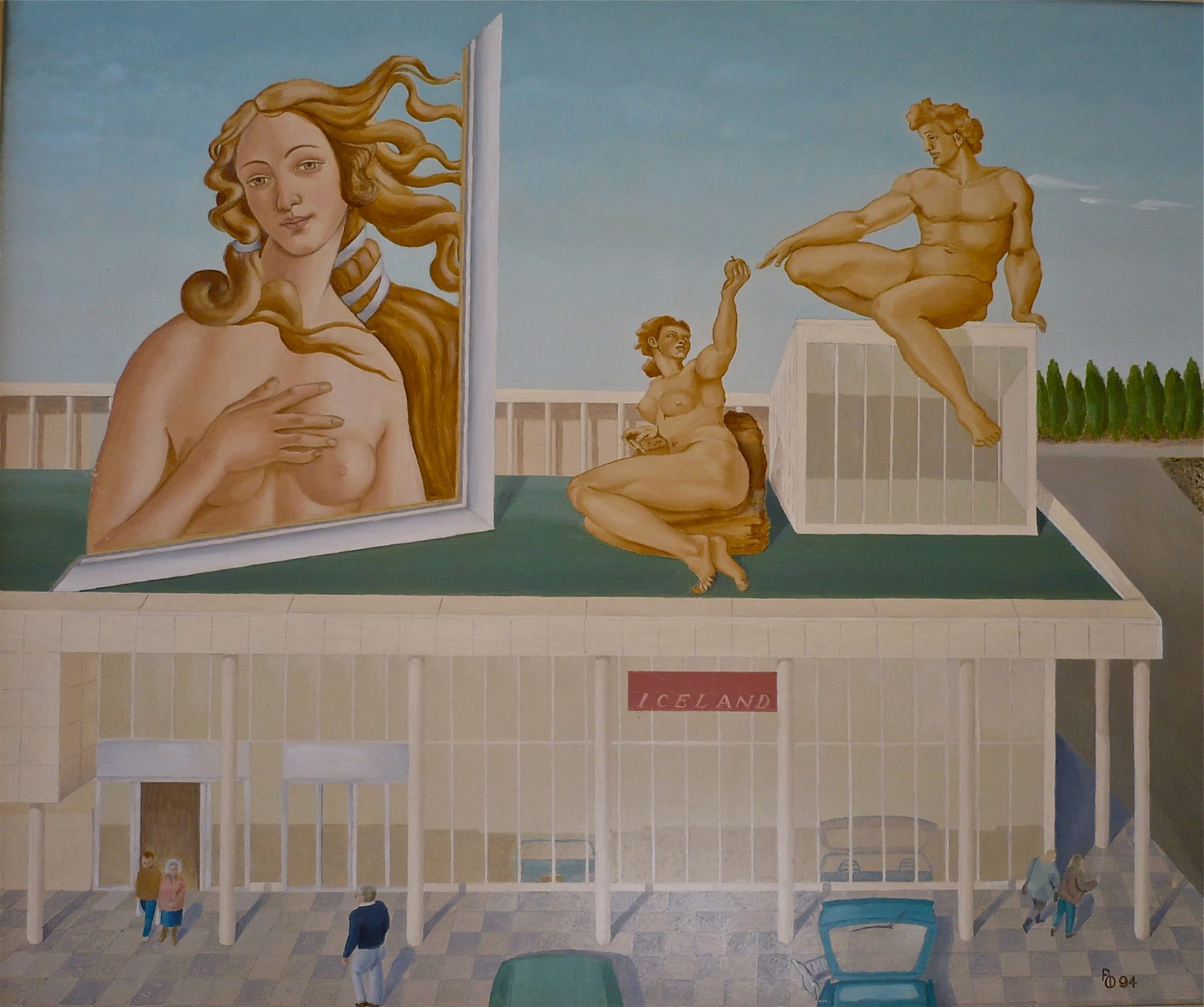
A reported sighting, as yet unconfirmed by Tony Dyson
I still believe the serene woman reading her newspaper over Earl Grey tea is my friend Alison Jermyn—though she insists otherwise, leaving us to wonder. And what a vivid imagination Tony Dyson brings to this scene! After seeing this painting, you may never sit peacefully in your garden again without half-expecting a dinosaur to emerge from the shrubbery.
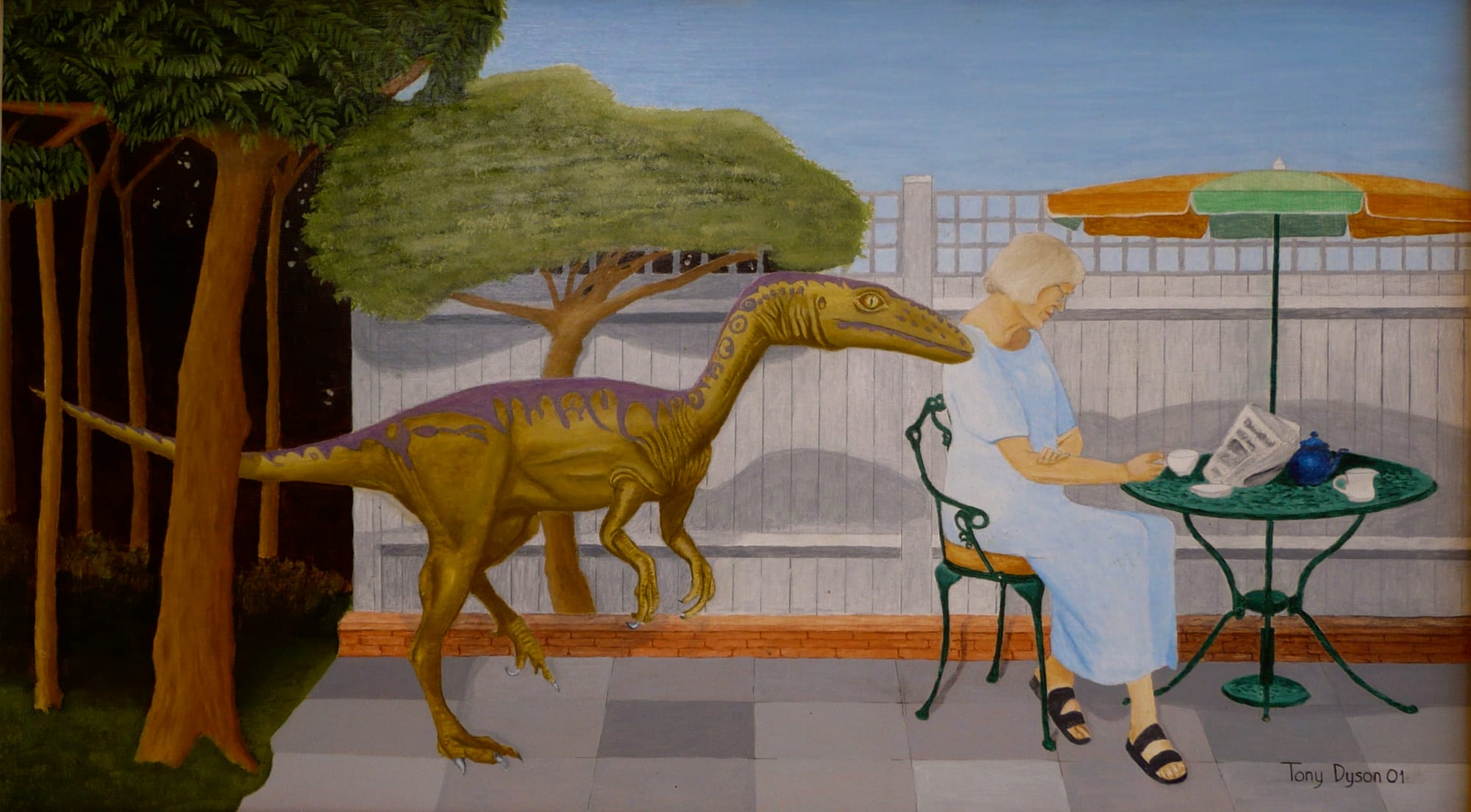
The terracotta garden party by Tony Dyson
The original title of this piece has been lost to time, which somehow adds to its mystique. Among Tony Dyson’s works, this stands out as one of the most enigmatic. Are we witnessing people encased in pots, or have the vessels themselves evolved into sentient, human-like forms? The ambiguity is deliberate, inviting us to question the boundaries between object and identity, containment and transformation. It’s a surreal meditation on how the ordinary can become uncanny—and how the familiar can quietly shift into something altogether strange. Another quirky creation that leaves many questions unanswered.
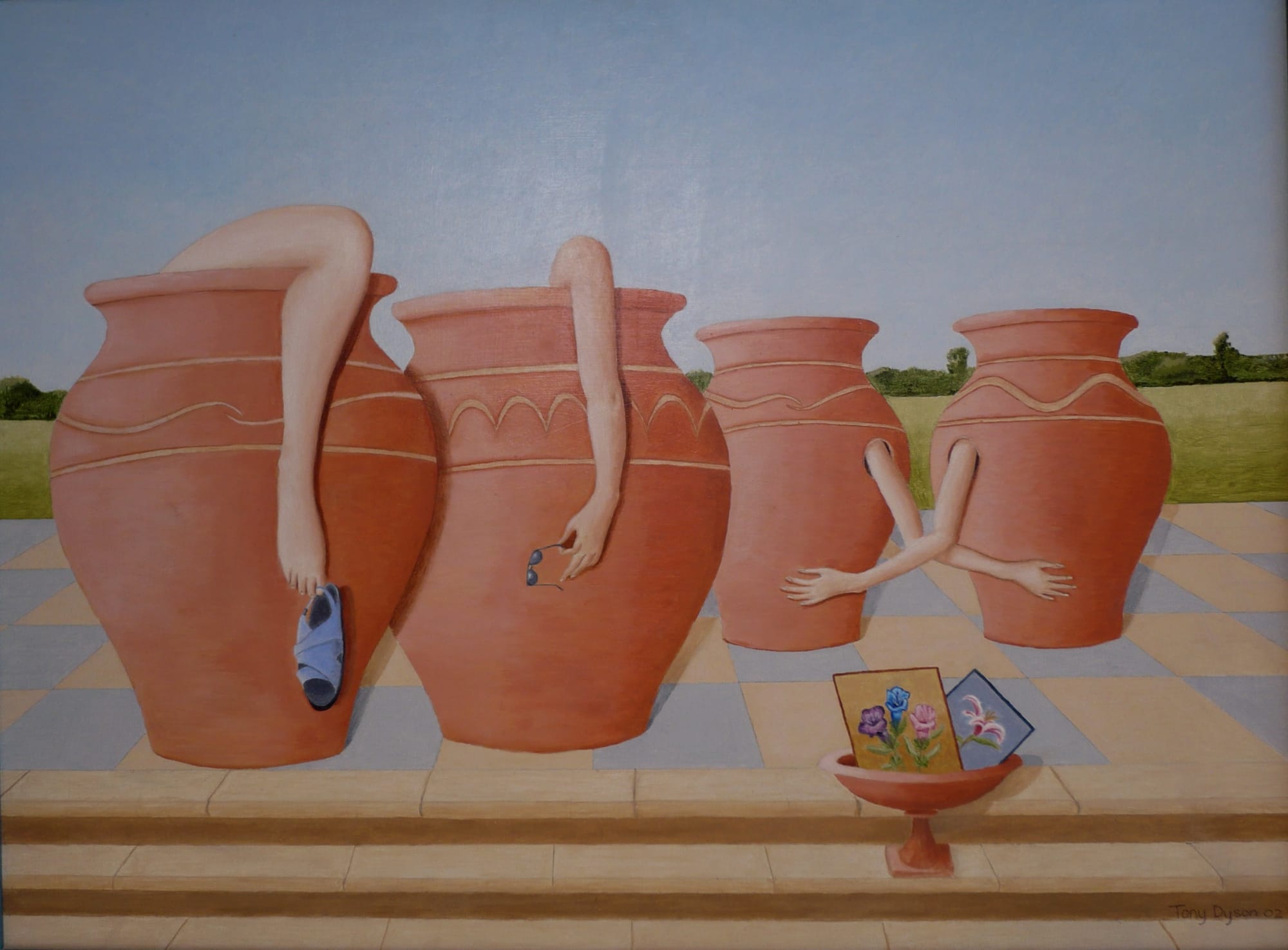
Madonna of the pinks by Tony Dyson
This painting is, without question, my favourite in Tony Dyson’s collection. It reveals his extraordinary skill as a classical artist, free from the playful quirks that define his usual work. Here, Tony pays homage to Raphael’s Madonna of the Pinks—a tender, intimate masterpiece believed to be one of Raphael’s earliest and smallest creations. There’s a quiet elegance in the way Tony renders this scene, allowing its beauty to speak for itself. Interestingly, Madonna of the Pinks is said to echo Leonardo da Vinci’s Benois Madonna, adding another layer of historical depth to this tribute. In Tony’s hands, the piece becomes not just a reproduction, but a heartfelt dialogue with the great masters.
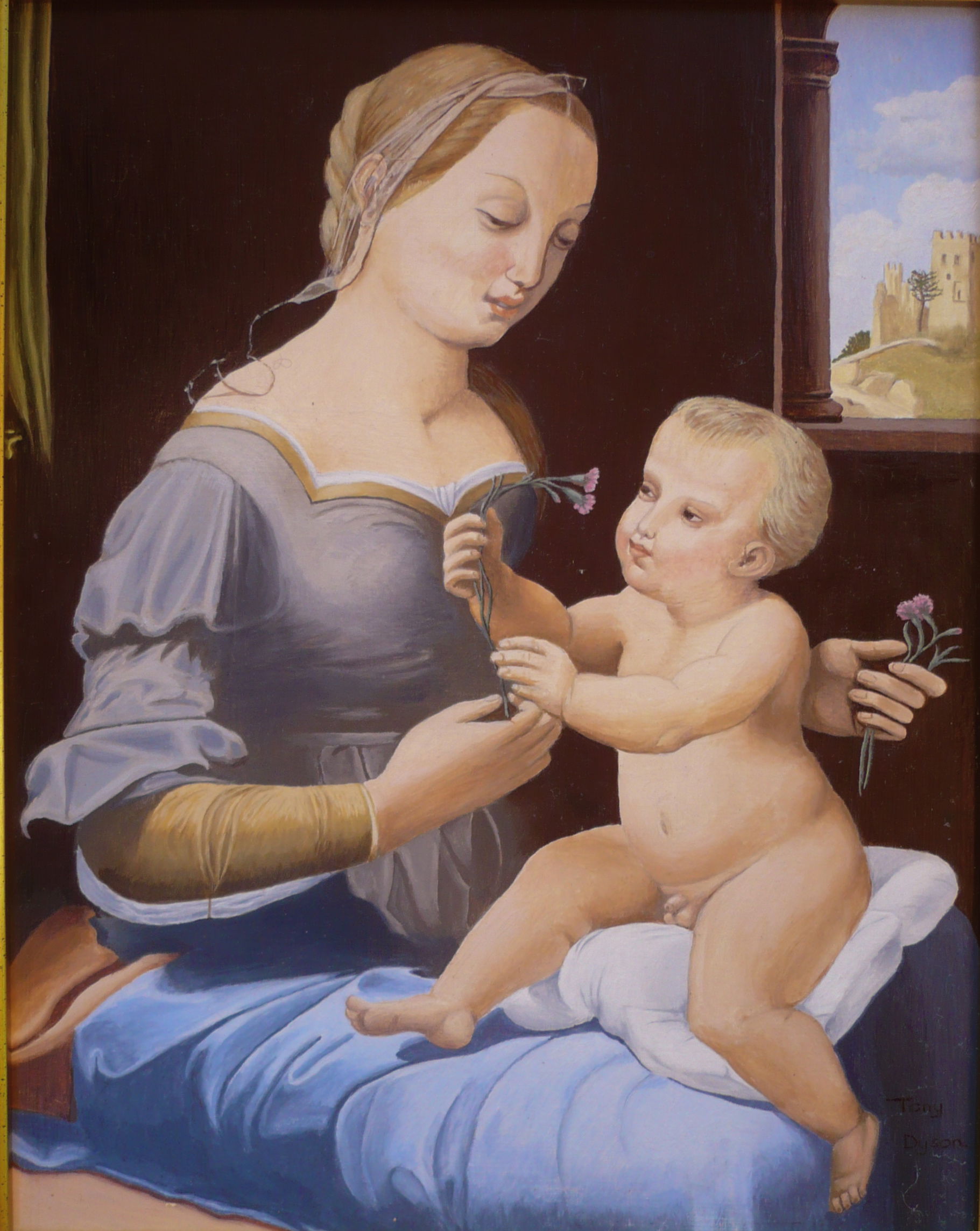
The Fashions 1860 by Tony Dyson
This is one of Tony Dyson’s more restrained works, gently transporting us to Buckinghamshire in the mid-1800s. The setting is Tyringham Hall, nestled just northeast of Milton Keynes—a place steeped in architectural grace and quiet grandeur. The ladies, dressed in period attire, appear to be enjoying a brisk stroll through Sir Edwin Lutyens’ formal gardens, perhaps exchanging pleasantries before retreating indoors for lunch. There’s a serene dignity to the scene, a moment suspended in time that showcases Tony’s ability to evoke atmosphere without relying on whimsy. While the composition is charming, Tony’s attempt at three-dimensional perspective falls slightly short—the figures remain somewhat flat, as if caught between dimensions. Yet this only adds to the painting’s charm, a reminder that Tony, though an amateur, brings remarkable heart and ambition to his craft.
